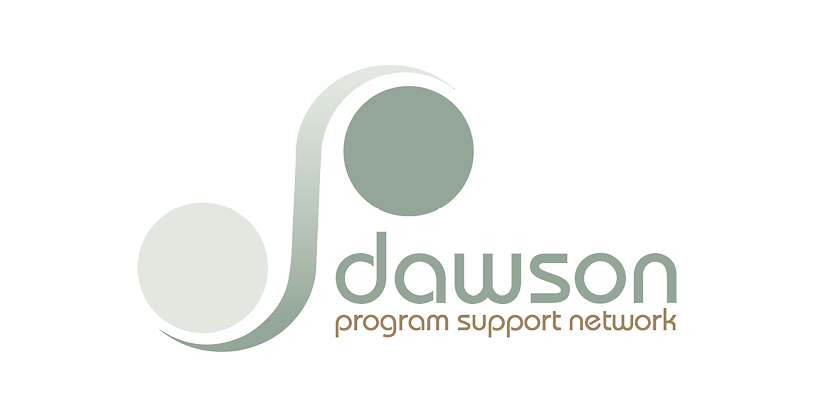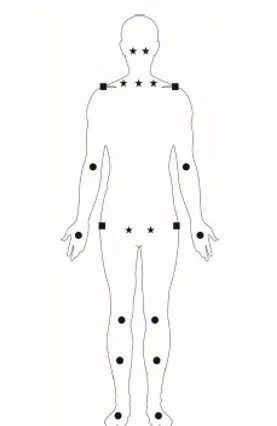
Chakras
What are the Chakras?
Chakra is the Sanskrit word for "wheel”.
A Hindu concept that can be likened to the power lines connected to your home - the role of the Chakras is to supply energy to the body.
The Major Chakras spin in a vortex-like motion to pull the energy into the body and are the transmitters of that energy through to the other electrical systems - specifically the Auric Fields, Meridians and Shape Fields.
The Dawson Program recognises that we each have 7 major Chakras extending from the base of the spine, to the crown of the head. They are accompanied by the 28 Minor Chakras which are responsible for the release of energy from the body and are situated on our hands, elbows, shoulders, hips, knees and feet, as well as our sinuses. (see diagram)
A Hindu concept
The energy that is expelled by the Minor Chakras can be seen by some people and is what is referred to as the ‘aura’. The colours can vary according to the energy used and the emotions felt at the time, as well as many other factors
Components of the Chakras
Each Chakra has its own individual frequency, alternating field (distance from the body), body entry (major chakras) and exit position (minor chakras) as well as an emotional content.
Just like the Meridians, Chakras have a corresponding gland and/or organ that they govern. Although they are linked, physical effects may be unrelated to that organ and can be wide ranging.
The Base and Crown Chakras come into existence at the moment of conception and supply energy to the Kundalini which, in turn, activates the Meridian structure present in every unfertilised egg.
The remaining 5 Chakras come into existence shortly after in what is referred to as Tantric Order.
Chakras and Our Emotions
Throughout life, our Chakras collect stories from our experiences, usually linked to their associated emotions and focuses. When our Chakras are affected by these stories they can start to fill up with what we liken to ‘sludge’ affecting the emotional content (or amplitude) and their ability to supply the body with energy.
Each major Chakra has an associated emotion and focus, for example the Base Chakra focuses on our sense of security and survival instinct and can be affected by emotions of fear and anxiety. The Heart Chakra as another example, is associated with emotions of love and compassion- it can be influenced by grief, rejection and disconnection.
Chakras and their corresponding ages
In addition to their linked emotions, the Chakras also ‘govern’ or link to a specific period in our lives.
For example, the predominant time of life for the Hara Chakra is 14-21 years of age and the Brow Chakra is 35-42 years old.
If the emotional content of the Chakra is not at its optimum, a likely cause is from an experience with its associated emotion during its predominant time of life.
A child aged 5 has an experience that calls into question their sense of security in the world and creates a feeling of fear. This is then stored in the Base Chakra.
Similarly, a teenager of 15 has an experience that calls into question their sense of self-worth or control and creates a feeling of anxiety. This is then stored in the Hara Chakra.
The effect is that anytime the child/person comes across a similar situation or feeling the experience will be amplified and will continue to do so until the underlying emotion/situation is identified and released from the stored Chakra.
This helps put into perspective why some people react to specific situations that others may find trivial.
Consequences and Solutions
Consequences of Malfunctioning Chakras
If any of the components of the Chakra system are not working at their optimum due to a shock of some sort, for example if the frequency is altered or the entry position shifts, there will be a drop in Life Force energy supplied to the body.
Chakra malfunctions can impact the physical body in many ways including (but not limited to):
Energy loss or fatigue
Contribution to the development of tumours and skin cell malfunction
Meridian frequency malfunction
This can then lead to spinal scoliosis and all its resultant problems through impinged nerve structure
Correcting Chakra System Malfunctions
Initial corrections are accomplished by identifying and correcting all components of the three main energy systems and are achieved through a combination of intent and frequency.
This process involves using the Kinesiological tool of Muscle Testing to ascertain:
What systems are not functioning at their optimal
When they first malfunctioned
Why they malfunctioned
What is required to correct it (frequency)
The initial correction is sometimes only the first of several corrections that may be needed to completely return an individual to health.







